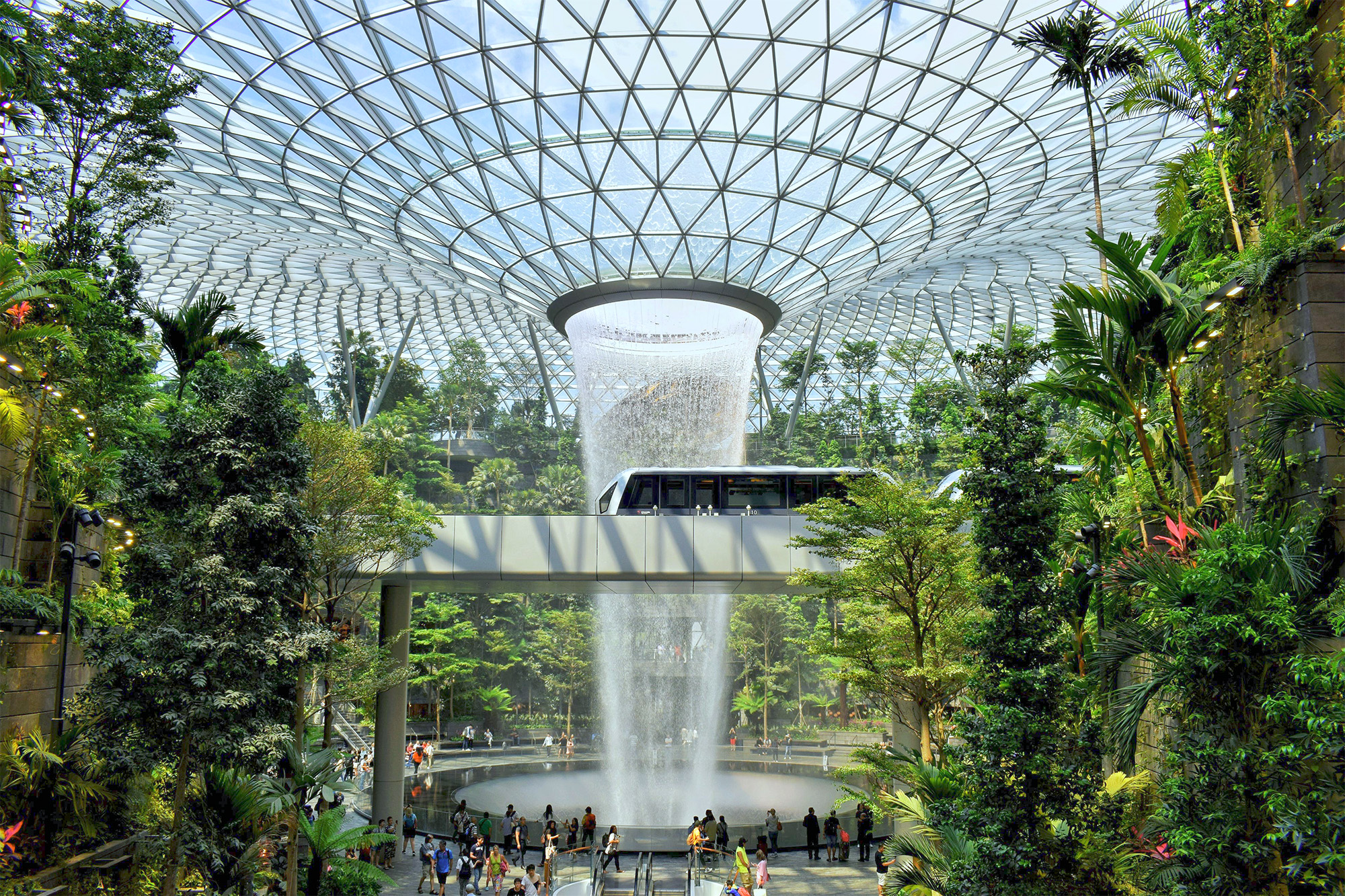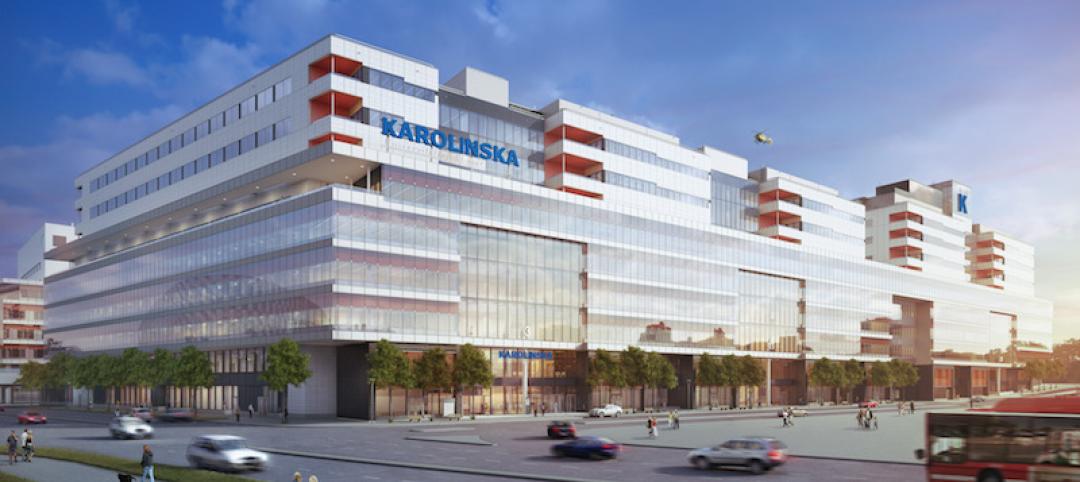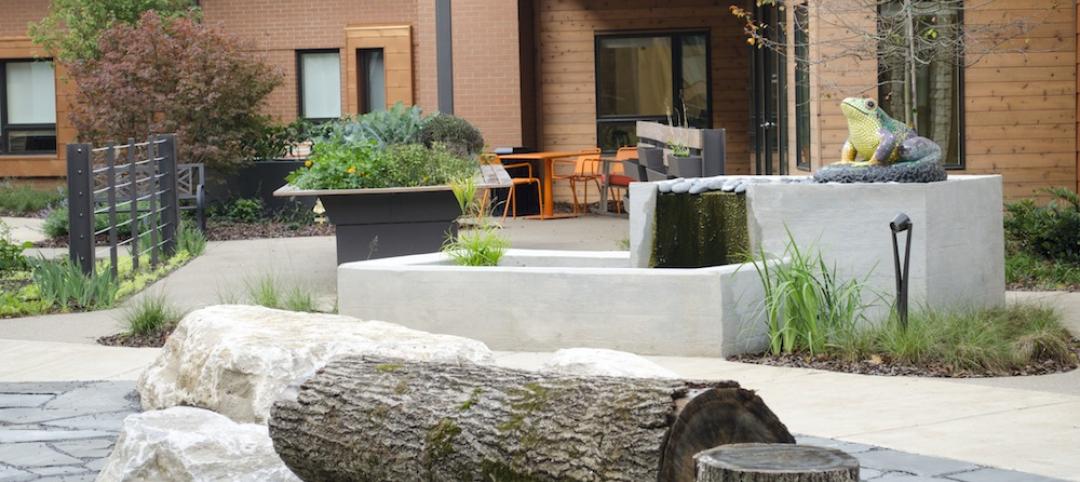The art of flight has captivated humans since the Wright Brothers made history with their first powered flight in 1903, changing our world forever. Over the next century, the intermingling of innovation and aspiration propelled the aviation industry forward into a dynamic era of transformation and growth.
More than 40,000 airports worldwide facilitate the annual global travel of billions of passengers. From the gates where passengers arrive and the terminals where they spend time, to the trains quickly moving passengers throughout the airport and belts where bags are delivered, airports have many facilities they need to uphold and maintain.
Skanska is proud to partner with the world’s busiest airports to transform the aviation industry of today for tomorrow’s travelers. Our collective goal: a better passenger experience. As air travel returns to pre-pandemic levels and the federal government pumps more than $1 billion into airport modernization efforts this year alone, the aviation industry is poised for even more shifts.
Here are some of the key trends we’re seeing in the aviation sector and how Skanska’s relentless focus on passenger experience is helping propel the industry forward.
Trend 1: Reduce congestion and increase capacity
Travelers don’t want to be stuck in airport traffic, nor do they want to be bumping into other travelers. That means an increased need for airport infrastructure nationwide that can seamlessly serve millions of annual passengers.
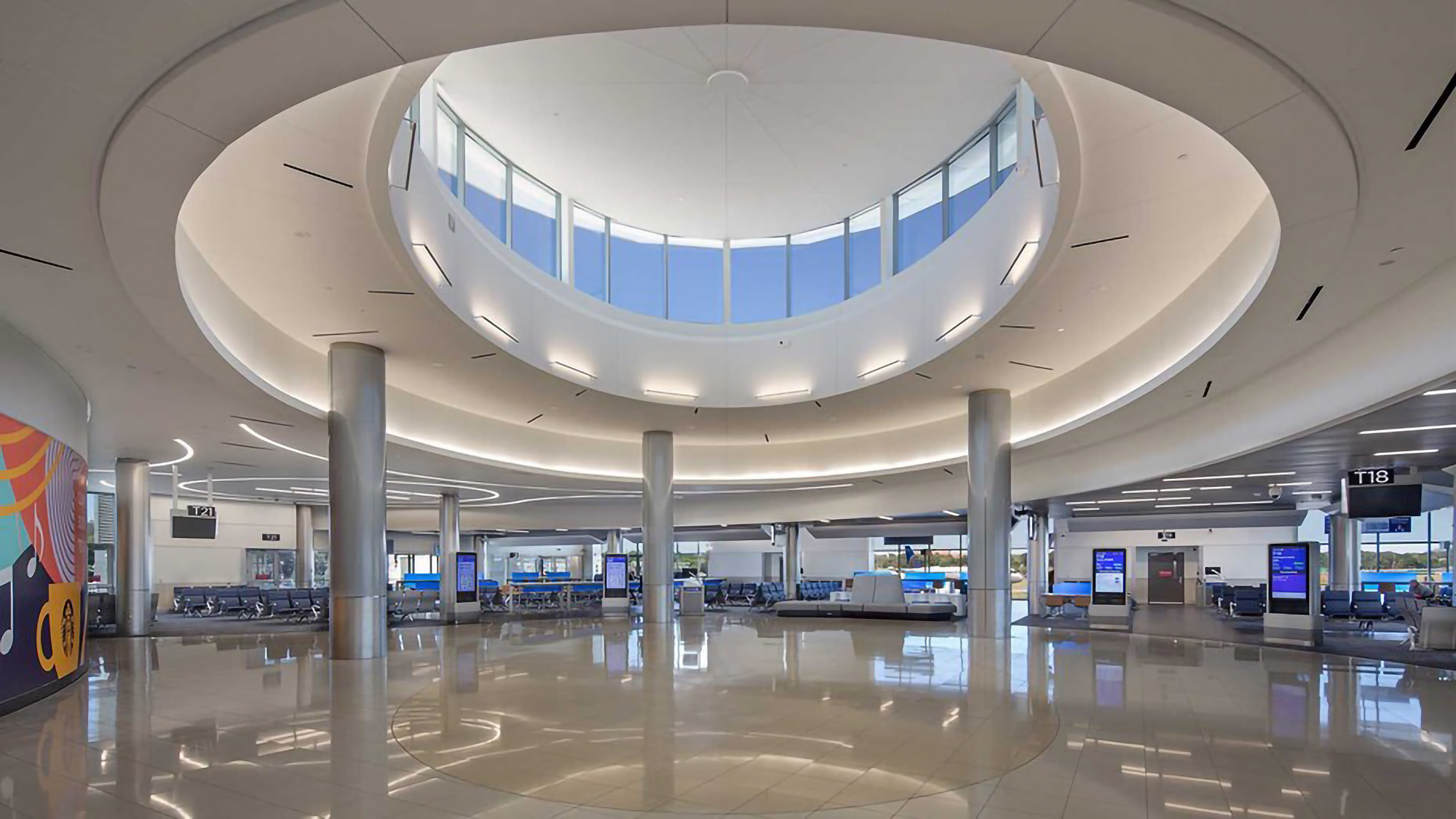
In Atlanta, Skanska helped develop a fresh and modern look at Hartsfield-Jackson International Airport, which included upgrading and modernizing restrooms and adding five additional gates at the north end of Concourse T. Skanska also spearheaded improvements to AGT (Plane Train) stations and Transportation Mall and wayfinding, improving the overall traveler experience. The project at the world's busiest passenger airport is part of a broader expansion and renovation plan which will increase capacity, renew and replace existing facilities and enhance the airport’s aesthetic appeal.
In Queens, New York, Skanska is improving passenger accessibility to and from JFK International Airport by leading a project that will reconfigure and reconstruct the airport’s Central Terminal area roadways and utilities as well as build a new Ground Transportation Center (GTC). This project will greatly improve the airport’s roadway network by creating an easier to navigate and more user-friendly airport experience.
Across the country in Los Angeles, Skanska is involved in the massive expansion efforts at LAX. With the 2028 Olympics just a few years away, our teams are hard at work creating utility, taxiway and overall accessibility improvements to decrease congestion, improve the passenger experience and lay the groundwork for increased capacity with the upcoming new Terminal 9 and Concourse 0.

Trend 2: Develop more modern airports that people want to be in
For many passengers, air travel is an all-day experience. As such, passengers look for and are pleasantly surprised when airports feature modern amenities that make their travel day better and create ease in getting around.
In New York, Skanska recently completed work on a massive redevelopment at LaGuardia Airport (LGA) Terminal B for that very purpose. Over the past few years, this 1.3 million sf project has been awarded several designations and recognitions related to its modernization and customer experience, including:
- 2021: UNESCO’s Prix Versailles Award for Best New Airport in the World
- 2022: The highest global 5-Star Airport Terminal Rating from Skytrax based on customer feedback
- 2022: National Academy of Construction’s inaugural Recognition of Special Achievement Award
- 2023: World Airport Awards, World’s Best New Airport Terminal
- 2023: Gold rating in Rick Hansen Foundation Accessibility Certification program, the highest rating in the accessibility awareness program
The new Terminal B brings 35 new gates with a Central Hall that connects to Terminal C and unifies the airport. Improvements also include a new West Garage with a pedestrian walkway connection to the new terminal, and upgrades to the airport roads and utilities. Skanska's work is helping accommodate and better the experience for the millions of travelers flying in and out of LaGuardia.
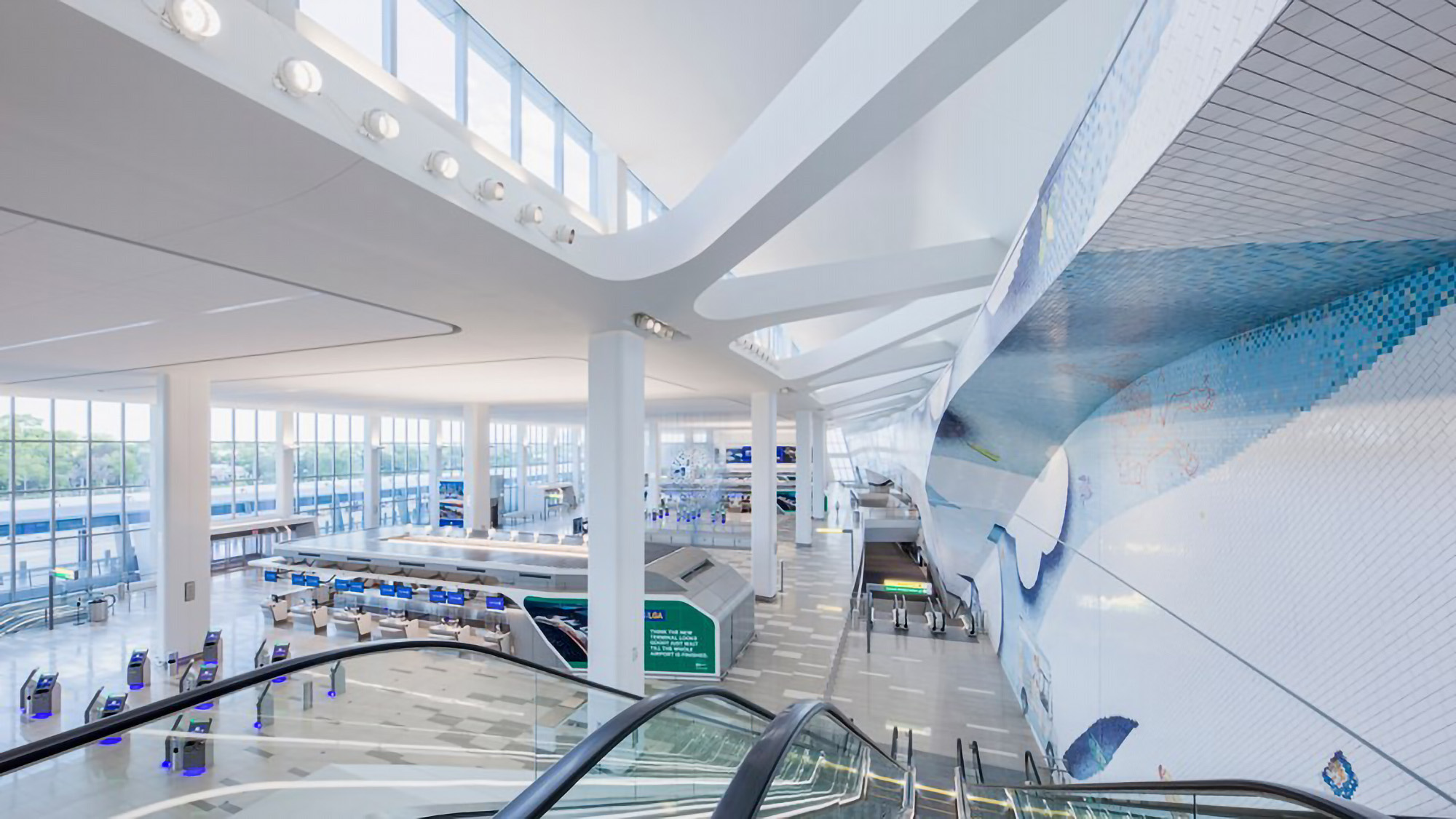
At Philadelphia International Airport, the goal was to create a state-of-the-art terminal that enhanced traveler flow, improved safety, and enriched the passenger experience. The project included 40,000 sf of phased renovations and alterations in the operating Terminal F Ticketing building and Terminal E-F connector. While there are myriad improvements, a highlight is that passengers can now move between Terminal F and the other terminals without leaving the secure area, a feat previously only accomplished via shuttle bus from Terminal C.
Trend 3: Build a better baggage claim experience
A critical part of the travel experience is ensuring passengers can retrieve their luggage upon arriving at their destination. With that in mind, Skanska regularly partners with airports to help streamline the baggage claim process and get passengers on their way.
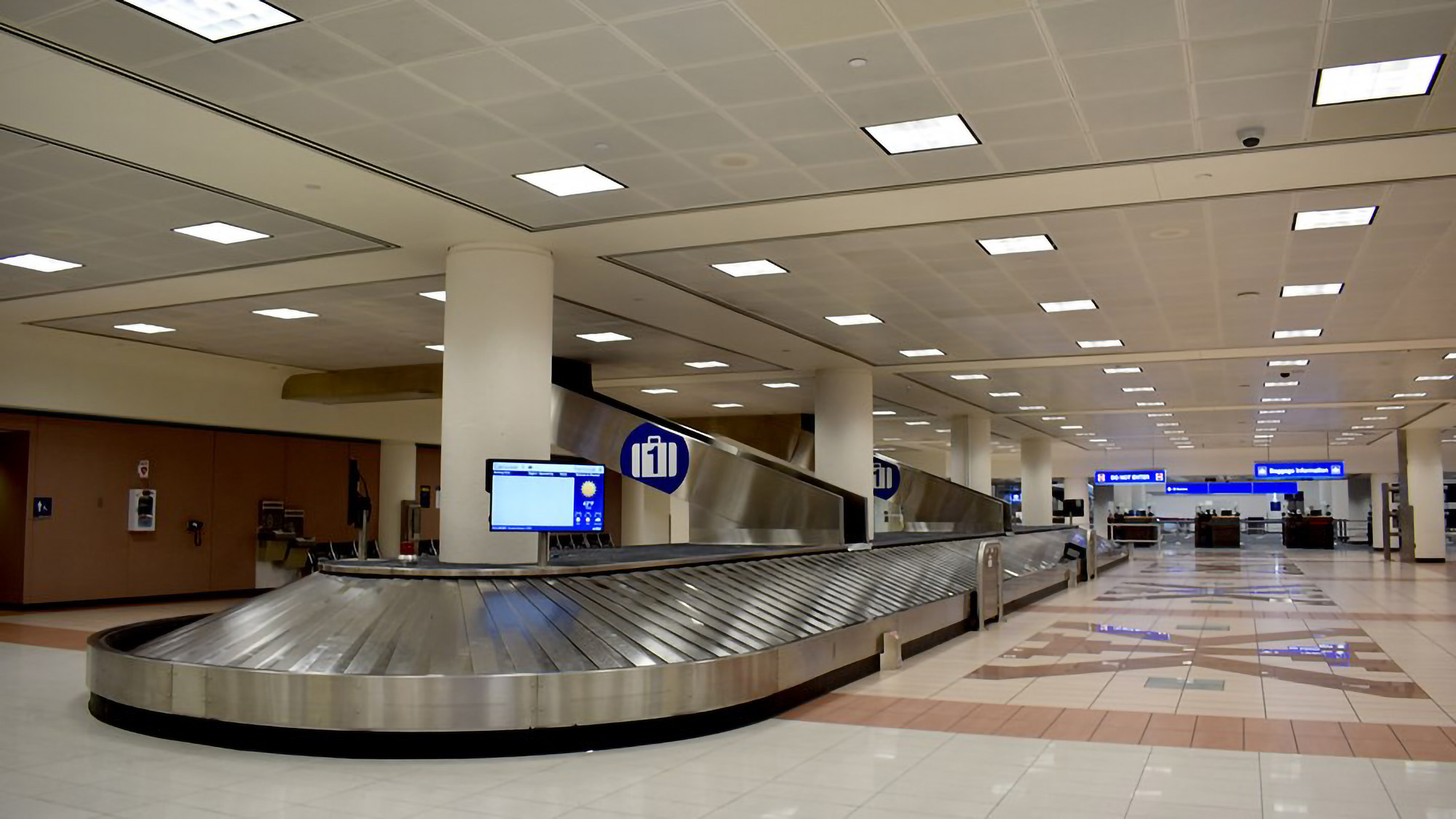
Along with improvements like reconfiguring Customs screening and inspection areas and upgrading escalators, baggage was a priority for our work at Phoenix Sky Harbor International Airport. Skanska teams modernized baggage claim carousels and installed a new oversized baggage elevator.
More than 2,300 miles away at Philadelphia International Airport, we built a new 31,500-sf baggage claim facility (with a 400-foot bag conveyor bridge) and realigned the airport’s Commercial Road to include pull-off lanes at the new baggage claim east entrance canopy, all helping to expedite the baggage claim process for travelers.
Function isn’t the only consideration when it comes to baggage claim, though. Passengers also like knowing they’re using an airport focused on sustainability. In Philadelphia, the new baggage claim building received LEED® Gold Certification. At LaGuardia Airport’s Terminal B, through Skanska’s use of a sophisticated building envelope, solar water heaters, large skylights, and wall-to-ceiling windows that reduce the need for lighting, the project has seen nearly 20% net energy savings.

Trend 4: Sustainability is top of mind
People increasingly want to engage with businesses—including airports—that advocate for sustainability. That’s why one of the aviation industry’s most ambitious goals (along with the development of sustainable aviation fuels) is the development of sustainable airports. A sustainable airport will reduce environmental impacts; help maintain high, stable levels of economic growth; and aid in achieving social progress. As with other sectors, Skanska prioritizes sustainable building across our airport projects.
At Portland International Airport, our redevelopment project is pursuing LEED® Gold certification while expanding and showcasing Northwest beauty with various sustainable features. The highlight is an iconic nine-acre long-span mass timber roof constructed from wood sourced from local and regional forests. The project’s biophilic design brings elements of nature into the airport’s interior, to support a more relaxed experience as travelers often rush to get to their destination.
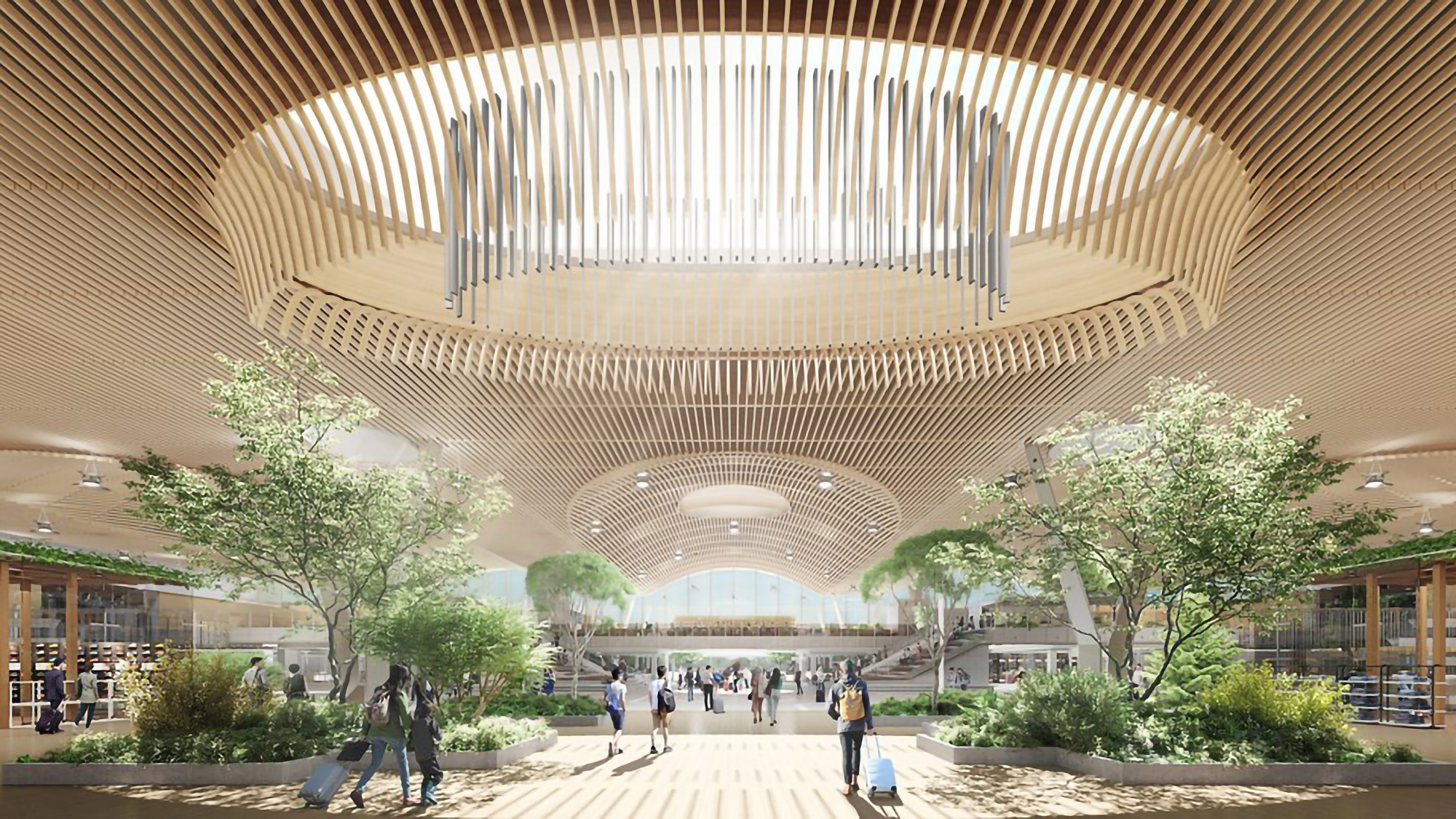
Throughout the LaGuardia Terminal B Redevelopment project, Skanska recycled 21,604 tons of concrete from the demolition of the original Terminal B parking garage and used roughly 5 million pounds of the recycled concrete on the adjacent jobsite. The recycling of demolition concrete onsite prevented offsite hauling that would require an additional 250,000 dump truck miles. Additionally, by using efficient fixtures and rainwater harvesting to reduce water use by 40%, the project’s embodied carbon and environmental impact was minimized.
Looking to the future
As the country aims to meet traveler demand, Skanska is ready to support airports in creating a better passenger experience. Air travel is not always easy, but our experts, experience in aviation work and commitment to excellence can help families and individuals arrive at the airport quicker, get through security faster, move around terminals easier and pick up their bags more effortlessly. If we can make the airport experience more enjoyable, then we’ve done our job—for today’s travelers and tomorrow’s.
Learn more about Skanska’s aviation projects here.
More from Author
Skanska | Jun 29, 2023
K-12 school construction: 5 ways strong community relations can lead to success
When constructing a K-12 school, building positive relationships with the community—including students, parents, school staff and residents—is critical to the success of the project. Here are five ways Skanska puts the community first when building K-12 schools in the Pacific Northwest.
Skanska | Mar 14, 2023
Skanska tests robots to keep construction sites clean
What if we could increase consistency and efficiency with housekeeping by automating this process with a robot? Introducing: Spot.
Skanska | Jan 27, 2023
Key takeaways from Autodesk University 2022
Autodesk laid out its long-term vision to drive digital collaboration through cloud-based solutions and emphasized the importance of connecting people, processes and data.
Skanska | Dec 5, 2022
5 ways sustainability professionals can help reduce construction's carbon footprint
Mark Chen, Sustainability Manager at Skanska, has found five specific ways to help the construction industry reduce its carbon footprint.
Skanska | Jul 5, 2022
Tour the new Patricia Reser Center for the Arts in Oregon
This month, the community of Beaverton, Oregon, welcomed a new haven for artistic expression with the opening of Patricia Reser Center for the Arts (The Reser).
Skanska | Jun 22, 2018
What owners should know before choosing the design-build project delivery method
Outside of drawing up a well-written contract, owners often overlook a key attribute that can significantly impact the success of a design-build project, writes Skanska’s Julie Hyson.
Skanska | Dec 7, 2017
Busting the myths: What the “S-word” can mean for construction and development
Sustainability, it’s a trendy term. The problem, however, is that it’s being used in so many different ways that people don’t even know what it means anymore.
Skanska | Aug 15, 2016
Future proofing hospitals
By improving the physical layout of hospitals and medical facilities, we can enhance and increase safety mechanisms, improve care, and help reduce the exposure to medical errors, writes Skanska USA's Andrew Quirk.
Skanska | May 6, 2016
Infographic: The greening of healthcare
By adopting green building and sustainable practices, healthcare facilities can save $15 billion over 10 years. Skanska's infographic spells it all out.
Skanska | Mar 4, 2016
Building a home where Alzheimer’s patients can thrive
Skanska recently completed Abe’s Garden in Nashville, Tenn., a memory care community designed to improve the lives of those affected by Alzheimer’s disease. Skanska's Senior Project Manager Jeff Elpers has more on the facility.

